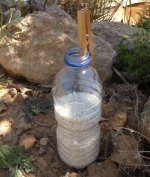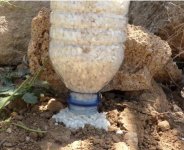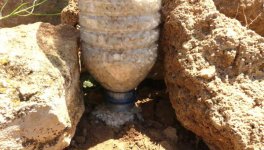-
Happy Birthday ICMag! Been 20 years since Gypsy Nirvana created the forum! We are celebrating with a 4/20 Giveaway and by launching a new Patreon tier called "420club". You can read more here.
-
Important notice: ICMag's T.O.U. has been updated. Please review it here. For your convenience, it is also available in the main forum menu, under 'Quick Links"!
You are using an out of date browser. It may not display this or other websites correctly.
You should upgrade or use an alternative browser.
You should upgrade or use an alternative browser.
Repuk's First Outdoor Run: ACE's Honduras, Ethiopian and Lebanese
- Thread starter repuk
- Start date
Tikal x Panama / Zam x Kali China
Tikal x Panama / Zam x Kali China
Ouch... my eyes hurt when I see how they were just brought out of the indoors "oven" on Aug 13rd:
Tikal x Panama
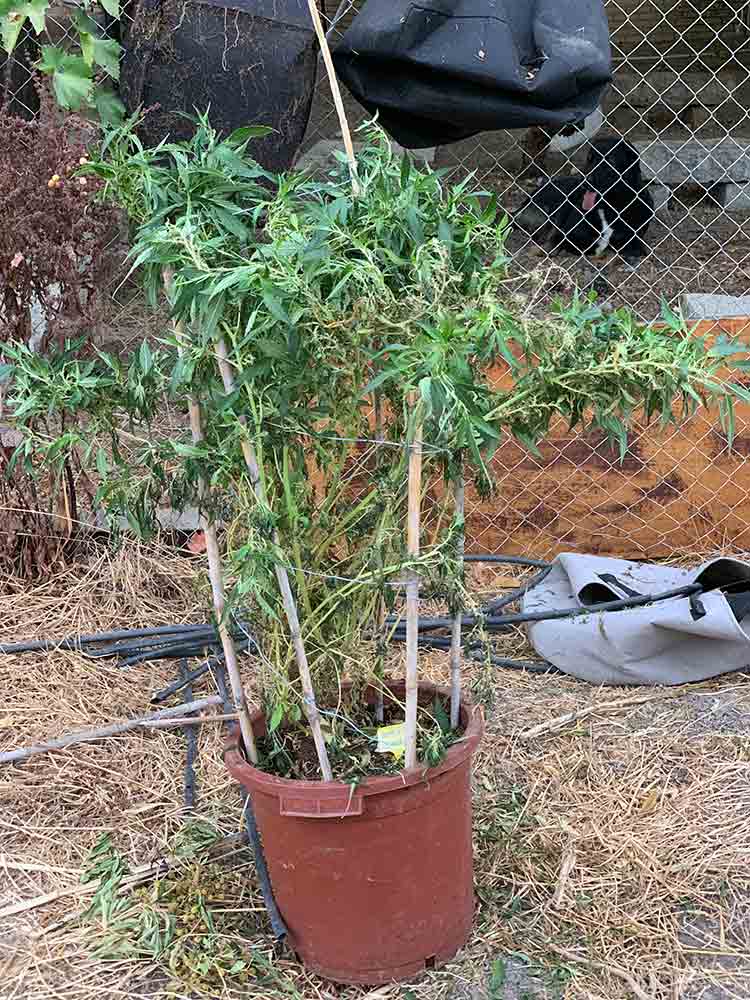
now:
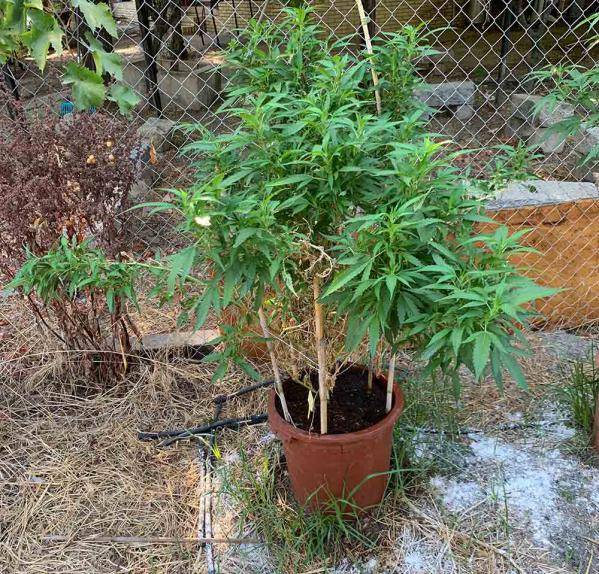
Zamaldelica x Kalichina
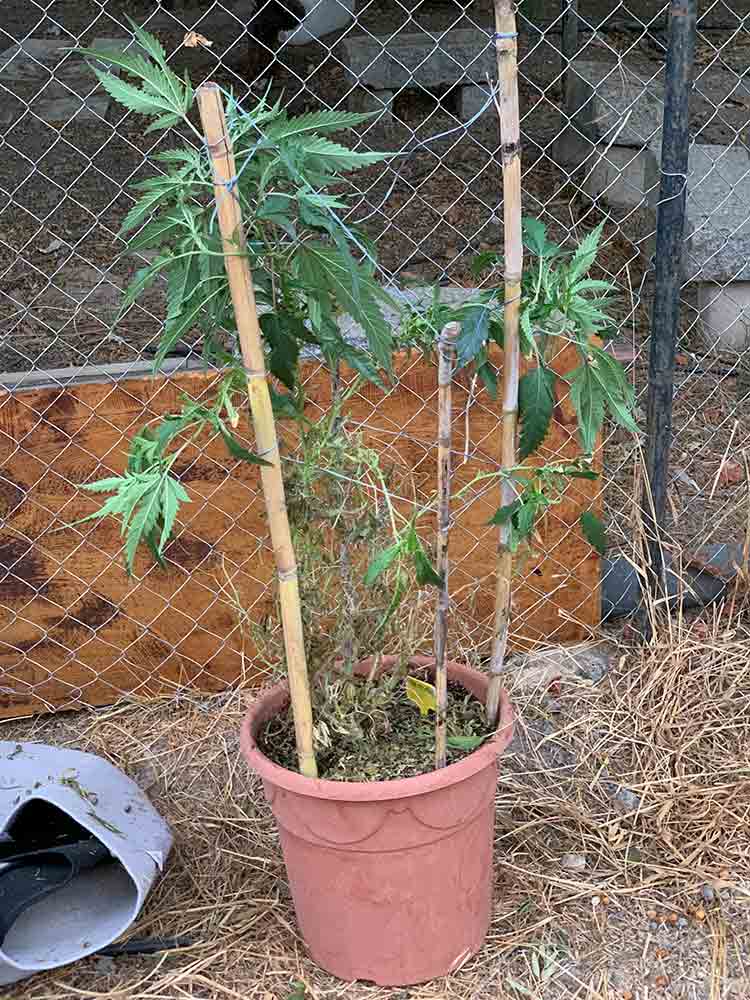
now:
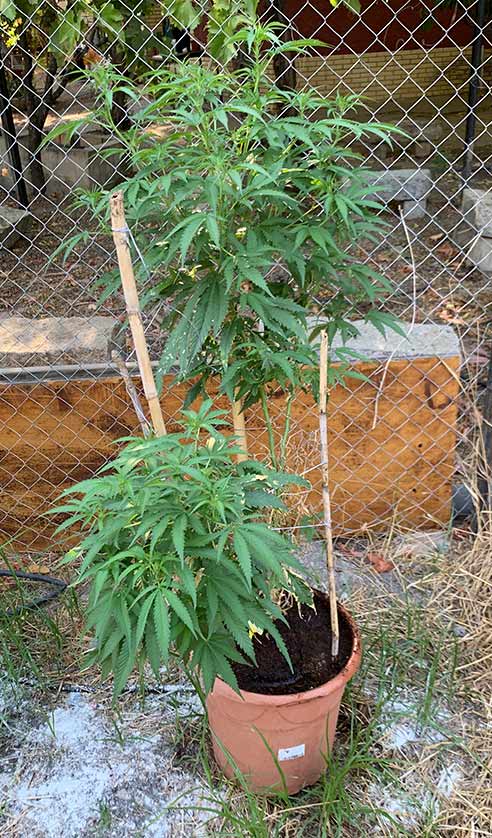
They're in coco, after seeing how they develop, I'm considering running coco next outdoor season.
White powder seen scattered around pots is diatomaceous earth to prevent bugs, specially ants, to bring bugs to "farm" on the plants (aphids, cottonets, etc).
Tikal x Panama / Zam x Kali China
Ouch... my eyes hurt when I see how they were just brought out of the indoors "oven" on Aug 13rd:
Tikal x Panama
now:
Zamaldelica x Kalichina
now:
They're in coco, after seeing how they develop, I'm considering running coco next outdoor season.
White powder seen scattered around pots is diatomaceous earth to prevent bugs, specially ants, to bring bugs to "farm" on the plants (aphids, cottonets, etc).
Sticky Sat
Active member
They all look healthy and beautiful... 
The unknown...
Let's call her the "lone girl". Or "the miracle", still wonder how she survived sprouting in the ground, really close to a trail my 60+Kg mastiff patrols constantly... on leftover soil after a "complete smartpot destruction episode" by himself in fact.
She sprouted between where Zamadelica and Honduras were, so it could be Honduran x Honduras or Ethiopian, or Zamaldelica x Honduras or Ethiopian.
I moved her to a 80L pot with recycled soil which upsetted her to no end, stunting her for almost a month... worked a lot to get her soil pot in healthy condition.
She finally recovered, lightning her up with that particular lime-green shade, and seems to be a fast, or at least, faster than the rest of wild honduras/ ethiopian crosses I'm running outdoor this year.
She has a completely different shade of green with regards to Honduras/Ethiopian crosses, a particular shade that says "Zamaldelica!" in my brain.
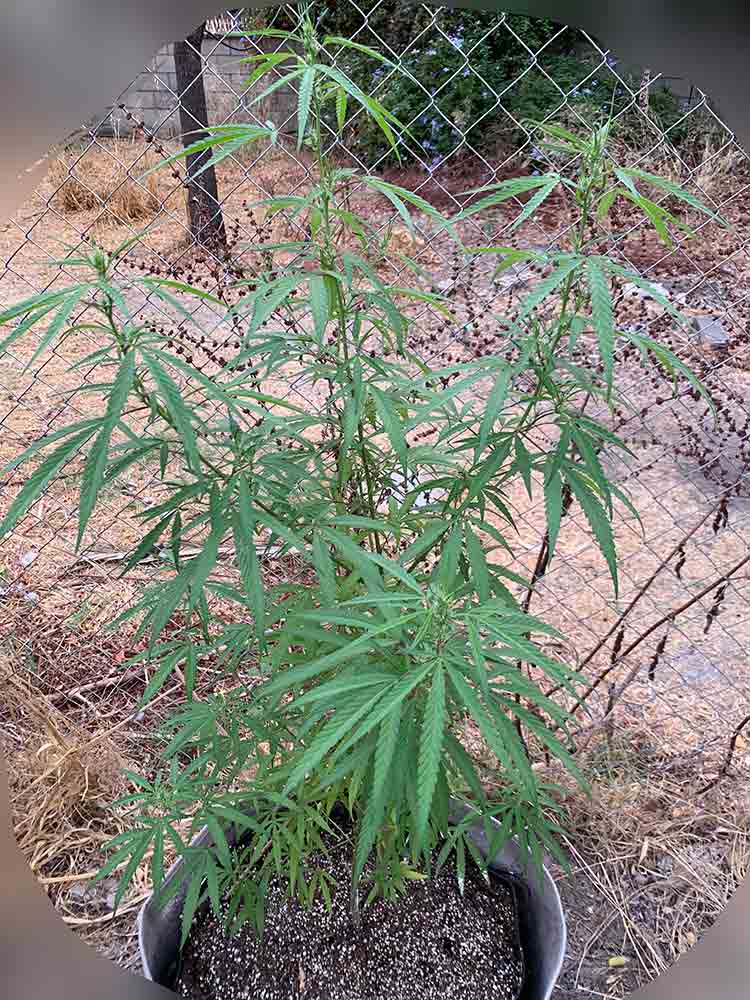
Detail:
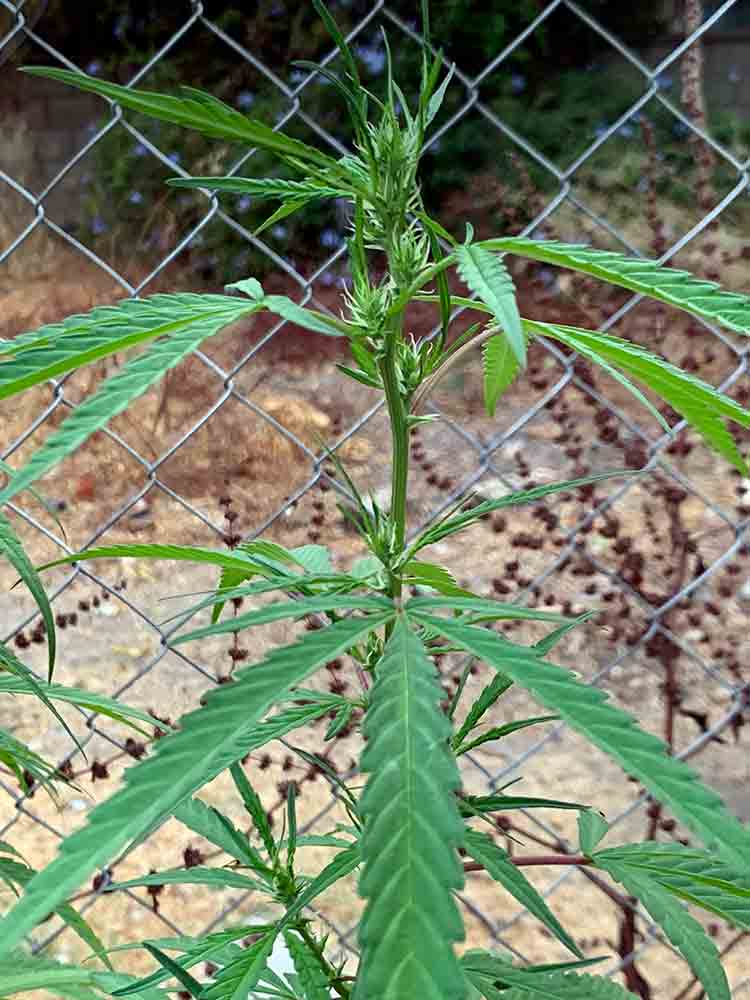
Wild Pot #2 (outside)
Culled another male yesterday (biggest plant) from the outside honduras x ethiopian pot.
Two dwarfs (untopped) confirmed girls, and a decent sized one which refuses to show sex yet.
I've staked all my ladies, this pot isn't an exception; in addition, I tied the biggest plant with the hope is a girl:
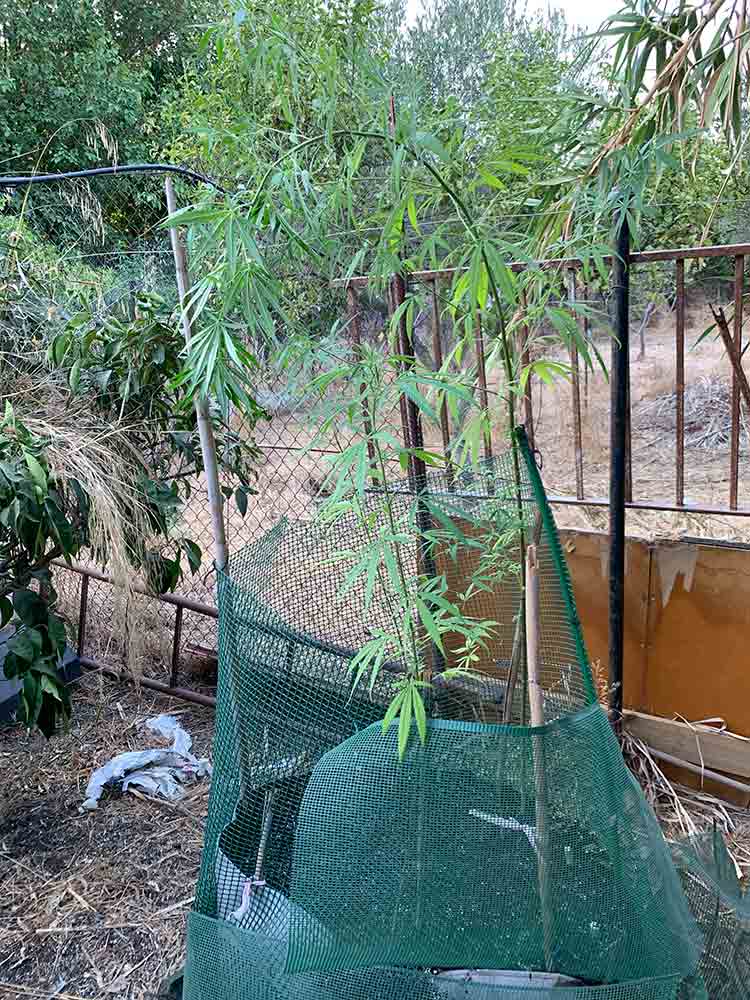
Let's call her the "lone girl". Or "the miracle", still wonder how she survived sprouting in the ground, really close to a trail my 60+Kg mastiff patrols constantly... on leftover soil after a "complete smartpot destruction episode" by himself in fact.
She sprouted between where Zamadelica and Honduras were, so it could be Honduran x Honduras or Ethiopian, or Zamaldelica x Honduras or Ethiopian.
I moved her to a 80L pot with recycled soil which upsetted her to no end, stunting her for almost a month... worked a lot to get her soil pot in healthy condition.
She finally recovered, lightning her up with that particular lime-green shade, and seems to be a fast, or at least, faster than the rest of wild honduras/ ethiopian crosses I'm running outdoor this year.
She has a completely different shade of green with regards to Honduras/Ethiopian crosses, a particular shade that says "Zamaldelica!" in my brain.
Detail:
Wild Pot #2 (outside)
Culled another male yesterday (biggest plant) from the outside honduras x ethiopian pot.
Two dwarfs (untopped) confirmed girls, and a decent sized one which refuses to show sex yet.
I've staked all my ladies, this pot isn't an exception; in addition, I tied the biggest plant with the hope is a girl:
Cares
Cares
As mentioned all girls have their main stems (including the 6 or so on each of the Golden Tiger x Panama cuts) staked, I propped them so that everything has good sun exposure.
No untopped plants this year, all have been topped, tied, propped, etc.
EM-1
smells like sweetnsour chinese sauce, remembers me to ketchup too...
I have my 5L container "brewing", and used the one I received stock at 1:1000, along with molasses at 1:1000, to all the plants, and they loved it.
Thanks Sticky_Sat! EM-1 worked wonders.... !!!!
Wild Pots
The girls in "wild pots", whose soil is the same as last year, are being fertilized on almost each watering: mostly Terra Vega (about 2ml/L), but also some chicken manure tea, bat guano tea, leonardite tea, hens "brewed water", and SOP a couple of times.
Diatomaceous Earth used every week to sprinkle pot surface after watering, also around the pots, or on the leaves/branches when I spotted ants on them. DE is incredible to convince ants on moving their colonies away, just sprinkle it around the colony holes, next day they will be gone.
Learning to "read" the soil... is it really obvious when microbial/bacterial life thrives on it: it gets that dark color and characteristic fresh bush smell.
Panama Haze
Today I smoked the last spliff from last year Panama Haze, to discover she left me a gift in the jar a lone seed!!!, which looked viable and definitely Panama Haze like.
a lone seed!!!, which looked viable and definitely Panama Haze like.
Sown already!
Cares
As mentioned all girls have their main stems (including the 6 or so on each of the Golden Tiger x Panama cuts) staked, I propped them so that everything has good sun exposure.
No untopped plants this year, all have been topped, tied, propped, etc.
EM-1
smells like sweetnsour chinese sauce, remembers me to ketchup too...
I have my 5L container "brewing", and used the one I received stock at 1:1000, along with molasses at 1:1000, to all the plants, and they loved it.
Thanks Sticky_Sat! EM-1 worked wonders.... !!!!

Wild Pots
The girls in "wild pots", whose soil is the same as last year, are being fertilized on almost each watering: mostly Terra Vega (about 2ml/L), but also some chicken manure tea, bat guano tea, leonardite tea, hens "brewed water", and SOP a couple of times.
Diatomaceous Earth used every week to sprinkle pot surface after watering, also around the pots, or on the leaves/branches when I spotted ants on them. DE is incredible to convince ants on moving their colonies away, just sprinkle it around the colony holes, next day they will be gone.
Learning to "read" the soil... is it really obvious when microbial/bacterial life thrives on it: it gets that dark color and characteristic fresh bush smell.
Panama Haze
Today I smoked the last spliff from last year Panama Haze, to discover she left me a gift in the jar
 a lone seed!!!, which looked viable and definitely Panama Haze like.
a lone seed!!!, which looked viable and definitely Panama Haze like. Sown already!

Sticky Sat
Active member
Just lovely plants brother... All of them... 
Looks like a big harvest is on the way...
i hope your smart mastif got double ration for avoiding the wild sprout...
Really wonder if the DE would work on the crazy ants we have here... so far nothing did...
i think ants are gonna be a big problem for agriculture in the years to come as they've built extreme resistance to chemical treatments...
Same with rats here...
Best of luck with the Panama haze seed...
Cheers
Looks like a big harvest is on the way...

i hope your smart mastif got double ration for avoiding the wild sprout...
Really wonder if the DE would work on the crazy ants we have here... so far nothing did...
i think ants are gonna be a big problem for agriculture in the years to come as they've built extreme resistance to chemical treatments...
Same with rats here...
Best of luck with the Panama haze seed...
Cheers

Last edited:
SolarLogos
Well-known member
Great report Repuk, a lot of great information. I too have a problem with ants. I've been putting a sticky spray on the stalk, but they find other ways to get in there. I've got a big bag of DE and I'm going to put it on my plants and water it into the soil also today. Thanks for sharing. Very interesting hybrids as well. I'm really enjoying your posts, looking forward to your harvest, a bountiful one!As mentioned all girls have their main stems (including the 6 or so on each of the Golden Tiger x Panama cuts) staked, I propped them so that everything has good sun exposure.
No untopped plants this year, all have been topped, tied, propped, etc.
EM-1
smells like sweetnsour chinese sauce, remembers me to ketchup too...
I have my 5L container "brewing", and used the one I received stock at 1:1000, along with molasses at 1:1000, to all the plants, and they loved it.
Thanks Sticky_Sat! EM-1 worked wonders.... !!!!
Wild Pots
The girls in "wild pots", whose soil is the same as last year, are being fertilized on almost each watering: mostly Terra Vega (about 2ml/L), but also some chicken manure tea, bat guano tea, leonardite tea, hens "brewed water", and SOP a couple of times.
Diatomaceous Earth used every week to sprinkle pot surface after watering, also around the tops, or on the leaves/branches when I spotted ants on them. DE is incredible to convince ants on moving their colonies away, just sprinkle it around the colony holes, next day they will be gone.
Learning to "read" the soil... is it really obvious when microbial/bacterial life thrives on it: it gets that dark color and characteristic fresh bush smell.
Panama Haze
Today I smoked the last spliff from last year Panama Haze, to discover she left me a gift in the jara lone seed!!!, which looked viable and definitely Panama Haze like.
Sowed already!
Peace, God bless my friend.
Fighting/Keeping Ants in Check
Fighting/Keeping Ants in Check
 Thanks!!
Thanks!!
DE is super effective with ants, I sprinkle it generously around the ant trails, colony entries, etc.
If you have a big colony, there's another non-toxic thing that works wonders to really force them to move away: rice.
You need the cheapest kind of rice you could find, the most crudest, starchy, humidity hungry the better, and a small plastic water bottle.
Depending on the ants and rice grain size, you can leave grains as they are or grind them with a kitchen mortar or a couple stones, the idea is making easy for the ants to haul the most of the rice inside their colony the faster the better.
Important: use gloves all the time. If you handle it with your hands ants will "smell" you and will unlikely fetch the rice.
Fill the empty water bottle with rice.
Put a clothes peg on the water bottle mouth.

Prop the bottle upside down on the ground, so that as ants haul rice, it will "auto feed" rice to them by gravity. Make sure it won't fell, use stones to prop it (wear gloves all the time)


How it works: Most ants feed from a fungus culture they have inside their colonies, and need proper RH to keep them, and to keep their food reserves edible.
The moment they bring rice inside, the starch in rice grains will fetch all moisture available, making their cultures to die, and then forcing them to leave elsewhere, or controlling drastically their population.
This is specially effective with leafcutter ants, which exclusively feed from fungus culture over leaf matter.
Also effective even with ants not relying so much in fungus, as whatever food they bring will be ruined by the lack of humidity, or even worse, if rice ferments inside the colony will become toxic for the ants.
Original video, from a popular Spanish Youtuber is of course in Spanish https://www.youtube.com/watch?v=AwXR3Tu3BNU but really worth a watch, really nice macro shooting, and great for "how to stage" the bottle.
Tips:
Is it important to place the bottle on a covered spot if there are rains, is it important for the rice to be dry. They also prefer shaded spots, ants won't work with intense heat and will favour a food source in the shade.
Around 8:00 he shows how to strategically sprinkle DE around colony entries.
Fighting/Keeping Ants in Check
 Thanks!!
Thanks!!DE is super effective with ants, I sprinkle it generously around the ant trails, colony entries, etc.
If you have a big colony, there's another non-toxic thing that works wonders to really force them to move away: rice.
You need the cheapest kind of rice you could find, the most crudest, starchy, humidity hungry the better, and a small plastic water bottle.
Depending on the ants and rice grain size, you can leave grains as they are or grind them with a kitchen mortar or a couple stones, the idea is making easy for the ants to haul the most of the rice inside their colony the faster the better.
Important: use gloves all the time. If you handle it with your hands ants will "smell" you and will unlikely fetch the rice.
Fill the empty water bottle with rice.
Put a clothes peg on the water bottle mouth.
Prop the bottle upside down on the ground, so that as ants haul rice, it will "auto feed" rice to them by gravity. Make sure it won't fell, use stones to prop it (wear gloves all the time)
How it works: Most ants feed from a fungus culture they have inside their colonies, and need proper RH to keep them, and to keep their food reserves edible.
The moment they bring rice inside, the starch in rice grains will fetch all moisture available, making their cultures to die, and then forcing them to leave elsewhere, or controlling drastically their population.
This is specially effective with leafcutter ants, which exclusively feed from fungus culture over leaf matter.
Also effective even with ants not relying so much in fungus, as whatever food they bring will be ruined by the lack of humidity, or even worse, if rice ferments inside the colony will become toxic for the ants.
Original video, from a popular Spanish Youtuber is of course in Spanish https://www.youtube.com/watch?v=AwXR3Tu3BNU but really worth a watch, really nice macro shooting, and great for "how to stage" the bottle.
Tips:
Is it important to place the bottle on a covered spot if there are rains, is it important for the rice to be dry. They also prefer shaded spots, ants won't work with intense heat and will favour a food source in the shade.
Around 8:00 he shows how to strategically sprinkle DE around colony entries.
Attachments
Welcome shawkmon!
Thanks Dugzy! will take pictures of the GTxP this afternoon.
hmmmm... I'd call him Smartpot Mastiff, not smart... 2 smartpots remaining from last year eight... and he doesn't care if there are plants on them or not!
I guess they specially like tearing apart the fabric from smartpots...
Luckily he didn't step over the seedling, I still wonder how could she sprout/survive with no waterings at all, and with full sun blast, 100% wild. She's a survivor!

Thanks Dugzy! will take pictures of the GTxP this afternoon.
Sticky_Sat said:i hope your smart mastif got double ration for avoiding the wild sprout...
hmmmm... I'd call him Smartpot Mastiff, not smart... 2 smartpots remaining from last year eight... and he doesn't care if there are plants on them or not!
I guess they specially like tearing apart the fabric from smartpots...
Luckily he didn't step over the seedling, I still wonder how could she sprout/survive with no waterings at all, and with full sun blast, 100% wild. She's a survivor!

Sticky Sat
Active member
Thanks for the interesting rice tip Repuk... 
Sure makes sense for relatively dry places but i'm afraid rh here is so out of the charts it may not be enough... Worth a try anyway...
Tropics are quite difficult when i comes to insects and diseases regulation... organically i mean... Just inside the house we have 4 different kinds of ants... can't get rid of them, we have to live with them...
Just inside the house we have 4 different kinds of ants... can't get rid of them, we have to live with them... 
Sure makes sense for relatively dry places but i'm afraid rh here is so out of the charts it may not be enough... Worth a try anyway...
Tropics are quite difficult when i comes to insects and diseases regulation... organically i mean...
Try it, nothing to lose... regarding ants inside home use food-grade DE, you can sprinkle it all you want w/o being toxic for you/pets etc.
As long as ants get in contact with it, you're fine. DE doesn't cause any reaction on them, if it sticks to them, they'll bring it inside the colony, controlling it and extending your "reach".
How often do you feed with EM-1?
As long as ants get in contact with it, you're fine. DE doesn't cause any reaction on them, if it sticks to them, they'll bring it inside the colony, controlling it and extending your "reach".
How often do you feed with EM-1?
SolarLogos
Well-known member
Thank you so very much for that information Repuk. I also really appreciate that you put up pictures as illustrations, thank you very much! I've been battling ant colonies for years. I have the DE down and can't wait to put out the rice. I'll let you know how it works my friend.Thanks!!
DE is super effective with ants, I sprinkle it generously around the ant trails, colony entries, etc.
If you have a big colony, there's another non-toxic thing that works wonders to really force them to move away: rice.
You need the cheapest kind of rice you could find, the most crudest, starchy, humidity hungry the better, and a small plastic water bottle.
Depending on the ants and rice grain size, you can leave grains as they are or grind them with a kitchen mortar or a couple stones, the idea is making easy for the ants to haul the most of the rice inside their colony the faster the better.
Important: use gloves all the time. If you handle it with your hands ants will "smell" you and will unlikely fetch the rice.
Fill the empty water bottle with rice.
Put a clothes peg on the water bottle mouth.
View Image
Prop the bottle upside down on the ground, so that as ants haul rice, it will "auto feed" rice to them by gravity. Make sure it won't fell, use stones to prop it (wear gloves all the time)
View Image
View Image
How it works: Most ants feed from a fungus culture they have inside their colonies, and need proper RH to keep them, and to keep their food reserves edible.
The moment they bring rice inside, the starch in rice grains will fetch all moisture available, making their cultures to die, and then forcing them to leave elsewhere, or controlling drastically their population.
This is specially effective with leafcutter ants, which exclusively feed from fungus culture over leaf matter.
Also effective even with ants not relying so much in fungus, as whatever food they bring will be ruined by the lack of humidity, or even worse, if rice ferments inside the colony will become toxic for the ants.
Original video, from a popular Spanish Youtuber is of course in Spanish https://www.youtube.com/watch?v=AwXR3Tu3BNU but really worth a watch, really nice macro shooting, and great for "how to stage" the bottle.
Tips:
Is it important to place the bottle on a covered spot if there are rains, is it important for the rice to be dry. They also prefer shaded spots, ants won't work with intense heat and will favour a food source in the shade.
Around 8:00 he shows how to strategically sprinkle DE around colony entries.
Peace, God bless
Sticky Sat
Active member
How often do you feed with EM-1?
Hi Repuk
i use it about once a week. When undisturbed, bacterias stay alive and efficient for at least that long...
i did side by side tests with once a day, once a week and once every 2 weeks and there wasn't significant differences...
i found that EM is also very effective in bringing back life into old soil, along with humic acid and LAB... Of course, kelp, crustaceans shells etc... go without saying...
It also greatly speeds up composting of kitchen waste, manure and kelp while supressing "bad" odors... You need it to make Bokashi...
LAB is also a great help until flowering, it makes buds a bit leafier if used after that...
i'm being hassled by thrips at the moment... so far they don't care about neem oil and any essential oil i've tried... Not sure if it was a coincidence but the only slow down was after a spray with a wedelia chinensis maceration... i tried it after seeing this plant isn't touched by anything...
I'll definitely try the rice trick on ants... i'd have loved to try DE but there's none here... Many thanks again for the information...
A great week end to all...


